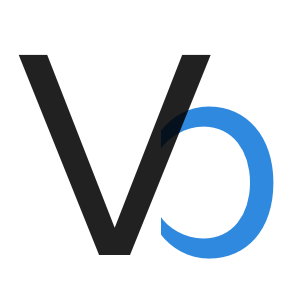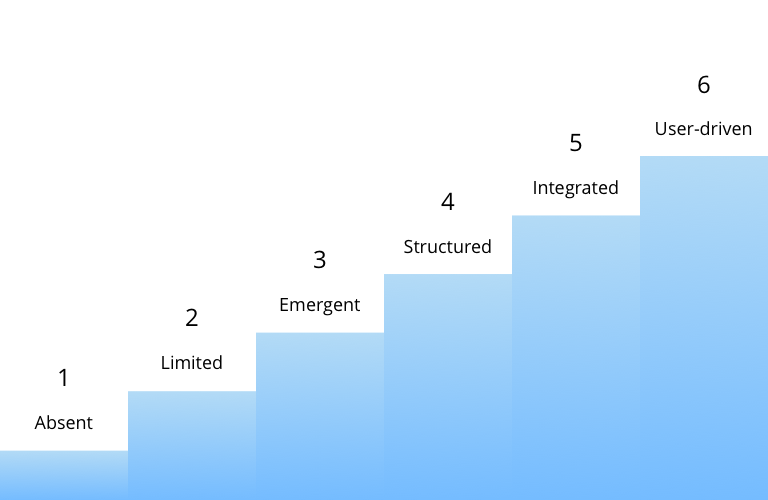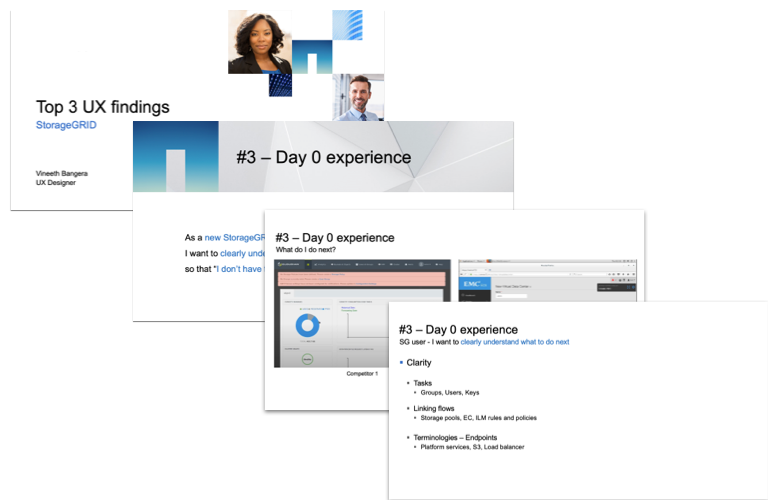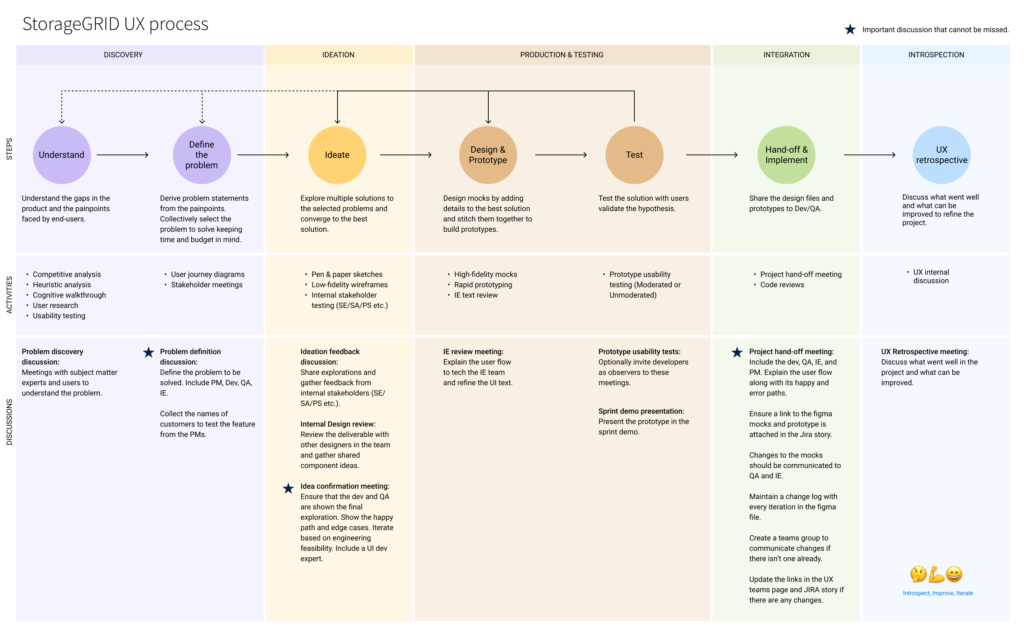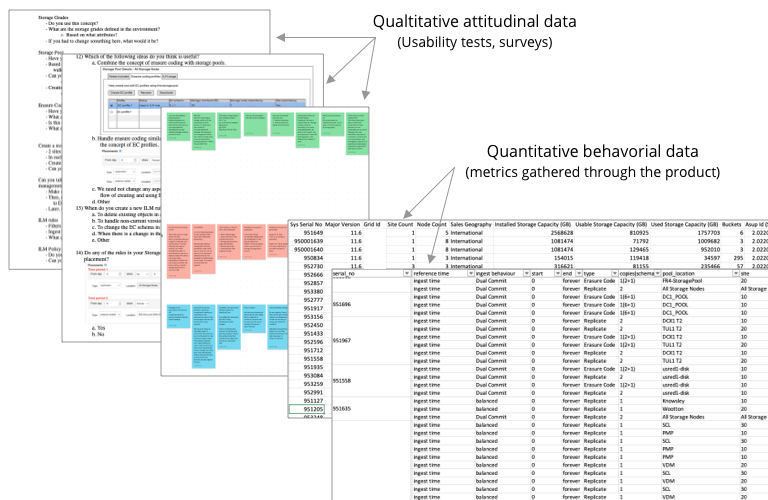- With increased awareness and support from product managers, our UX team expanded to accommodate more projects. We standardized our approaches, tools, and methods to ensure consistent deliverables. A comprehensive UX onboarding process facilitated quick ramp-up for new team members.
- We prioritized discovery research, creating personas as decision-making cornerstones. Continuous qualitative validation research gathered valuable insights for the product roadmap, allowing us to participate in architectural discussions and meet deadlines.
- Team deliverables were showcased in demo meetings, gathering stakeholder feedback and educating others about ongoing projects. These initiatives ensured our involvement in all release projects.
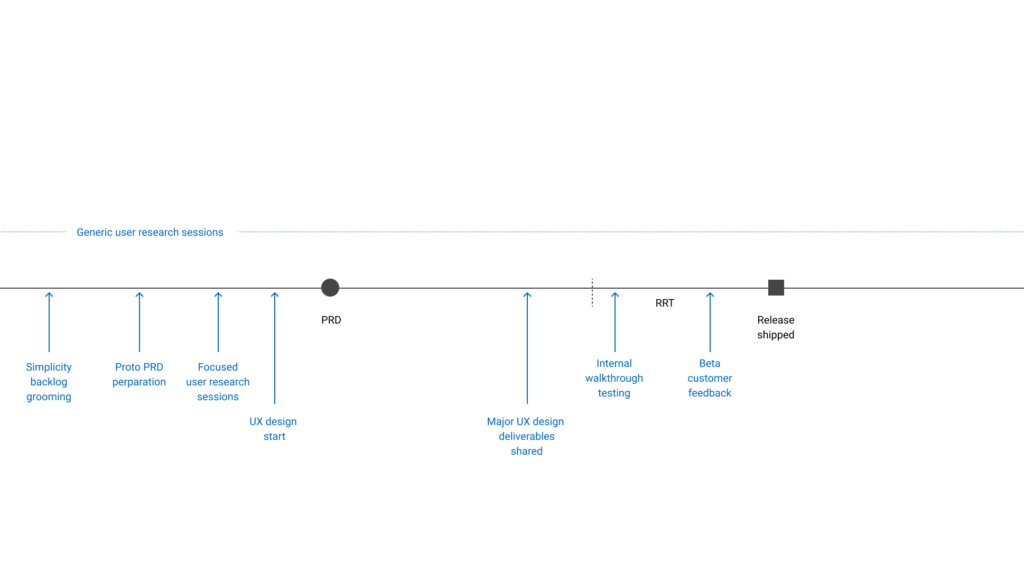
Timeline of UX activities and deliverables in a release
